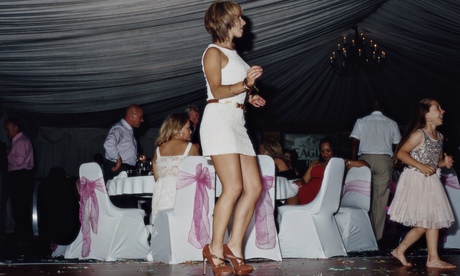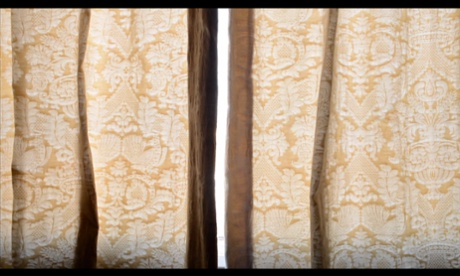
“It is not men who migrate,” wrote John Berger in A Seventh Man, his provocative 1975 book on the condition of the migrant workers in Europe, “but machine minders, sweepers, diggers, cement mixers, cleaners, drillers etc. This is the significance of temporary migration. To rebecome a man (husband, father, citizen, patriot), a migrant has to return home. The home he left because it held no future for him.”
This quote is the conceptual starting point for an intriguing new group show called Rebecoming at Flowers Gallery in east London, curated by Tim Clark, who edits the online magazine 1000 Words. He has brought together four emerging artists (and the winners of the inaugural 1000 Words award) – Virgilio Ferreira, Lucy Levene, Henrik Malmström and Tereza Zelenkova – to tackle the subject of emigration. The results are intriguing, not least because it is a subject that traditionally belongs to documentary or reportage photographers – and no one here adheres to either genre.
The artist who comes closest is Lucy Levene, whose staged portraits of Italian emigrants and their social lives – at home, clubs, community halls – take a realist approach while undercutting it. Her series is called The Spaghetti Tree after the famous 1957 April Fool’s Day hoax by the BBC current affairs programme Panorama, for which they made a bogus film about a bumper “spaghetti harvest” in Switzerland that convinced many British viewers pasta that actually grew on trees.
Levene’s series hinges on her interaction with the large Italian communities in Bedford and Peterborough. Adopting the role of an events photographer, she plays with stereotypes of Italianness – the importance of family, community, dressing smartly. But though they may not look it, her images are constructed, with Levene often shooting her portraits “at just the wrong moment”, while people were composing themselves or relaxing after a formal portrait. This highlights what she calls “the tensions between public and private, formal and informal”, while alerting us to the role of the official photographer in sustaining such enduring archetypes.

More surprising still is Zelenkova’s take on the same community, which takes a detached approach to the subject of belonging and alienation. Her series Girls and Gloves gathers detritus from an abandoned brick factory in Bedford that once employed over 7,000 Italian men. Black-and-white closeups of the grubby gloves they wore are juxtaposed with crumpled remnants of the Page 3 pinups that adorned the walls, where the menial and mind-numbing work, she suggests, bred an atmosphere of simmering sexual and social frustration.
That atmosphere is alluded to in another large portrait of the torso of an anonymous, corduroy-clad Italian man that nestles on a wooden pallet on the floor, a brick dangling from the ceiling inches above his crotch. For me, it seemed oddly out of place amid the more restrained images on the wall. But Zelenkova, whose imagination may have been somewhat contained by the strictures of this commission, remains an artist who walks her own darkly intuitive path.

Perhaps the most atmospheric series here is by the Portuguese photographer Ferreira, who has tried to show the inner emotional landscape of emigration. His pictures sit somewhere between documentary and impressionistic narrative, and are a lyrical evocation of the Portuguese diaspora. Using blurred movement and double exposure as well as traditional portraiture and landscape, his work is best experienced in the accompanying book, Being and Becoming, which is mysterious and allusive but quietly, cumulatively fascinating. The sense of place suggested in Levene and Zelenkova’s work reflects a melancholy state of mind – the sense of not belonging, and longing for home, that so defines the emigrant’s life.

Henrik Malmström’s video meditation takes on the mundane lives of Portuguese emigrant workers in Hamburg. Here, fragments from what could be a much bigger narrative are intercut into a wilfully disrupted one: a cleaner moving slowly on a motorised floor sweeper in an art gallery; a woman ascending an escalator in a deserted train station; another woman entering a church and stopping to touch a holy statue and offer a silent prayer. These everyday fragments add up to a glimpse of what are often invisible lives – the “machine minders, sweepers, diggers, cement mixers, cleaners, drillers ...” of Berger’s book, who, nowadays, are more likely to be cleaners, sex workers, fruit pickers, builders. The jobs change, the conditions stay the same – or if anything have grown more dehumanising and alienating, as the new precariat has emerged across Europe and beyond.















